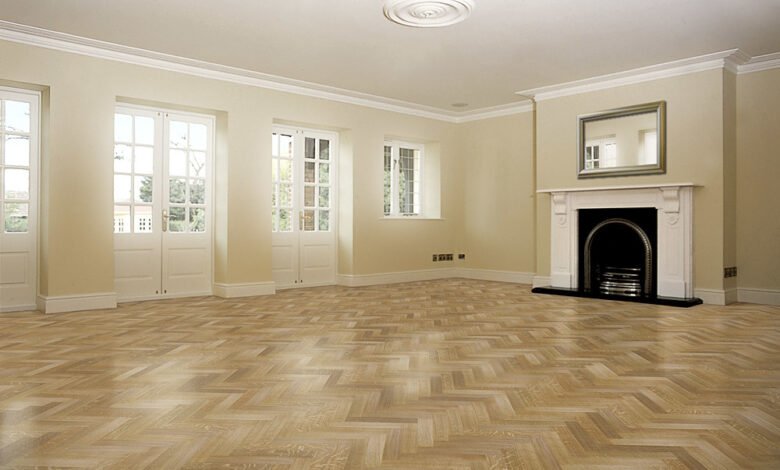
Introduction to Parquet Flooring
Parquet flooring is a popular choice for homeowners seeking to add elegance and charm to their living spaces. Unlike traditional hardwood floors, parquet flooring features intricate patterns and designs created by arranging small wooden pieces in geometric shapes. Choosing the right parquet floor to match your decor involves careful consideration of various factors to ensure that it complements the style and ambiance of your home.
Factors to Consider When Choosing Parquet Flooring
Budget
Before embarking on your quest for the perfect parquet floor, it’s essential to establish a budget that aligns with your financial constraints. Parquet flooring in Dubai comes in a wide range of prices depending on the type of wood, design complexity, and installation method. By determining your budget early on, you can narrow down your options and focus on finding affordable yet high-quality parquet flooring solutions.
Durability
Durability is another crucial factor to consider when selecting parquet flooring for your home. Different types of parquet flooring offer varying levels of durability, with solid wood parquet being the most robust and long-lasting option. Engineered wood parquet and laminate parquet are also durable choices that can withstand daily wear and tear, making them suitable for high-traffic areas such as living rooms and hallways.
Understanding Different Types of Parquet Flooring
When it comes to parquet flooring, there are three primary types to choose from: solid wood parquet, engineered wood parquet, and laminate parquet. Each type has its unique characteristics, benefits, and considerations, making it essential to understand the differences before making a decision.
Solid Wood Parquet
Solid wood parquet is made from 100% natural wood and is renowned for its timeless beauty and durability. It offers unmatched warmth and character to any room and can be sanded and refinished multiple times to maintain its appearance. However, solid wood parquet may be prone to expansion and contraction due to fluctuations in humidity, requiring proper acclimation and installation techniques.
Engineered Wood Parquet
Engineered wood parquet consists of multiple layers of wood veneer bonded together to create a stable and durable flooring option. It provides the look and feel of real wood at a lower cost and is less susceptible to moisture-related issues than solid wood parquet. Engineered wood parquet is available in a variety of finishes and styles, making it suitable for both traditional and modern interiors.
Laminate Parquet
Laminate parquet is a budget-friendly alternative to solid and engineered wood parquet, offering excellent durability and easy maintenance. It consists of a high-density fiberboard core topped with a photographic layer that mimics the appearance of wood. Laminate parquet is scratch-resistant, fade-resistant, and moisture-resistant, making it ideal for areas prone to spills and moisture, such as kitchens and bathrooms.
Matching Parquet Flooring with Your Decor
Once you’ve selected the type of parquet flooring that best suits your needs, it’s time to focus on matching it with your decor. Several factors influence how well parquet flooring blends with your existing furnishings and design scheme, including color and finish, pattern and layout, and room size and lighting.
Color and Finish
The color and finish of your parquet flooring play a significant role in determining its overall aesthetic appeal. Lighter shades of wood, such as oak and maple, can brighten up a room and create a sense of spaciousness, while darker hues, such as walnut and mahogany, add warmth and sophistication. Additionally, the finish of the flooring, whether matte, glossy, or textured, can enhance its visual impact and complement your decor style.
Pattern and Layout
Parquet flooring is available in a variety of patterns and layouts, ranging from classic herringbone and chevron designs to intricate geometric motifs. The pattern you choose should harmonize with the architectural features and furnishings of your home, creating a cohesive and visually pleasing environment. Consider the scale of the pattern in relation to the size of the room and aim for balance and proportionality in your layout.
Room Size and Lighting
The size of the room and its lighting conditions can also influence your choice of parquet flooring. In smaller rooms, lighter-colored flooring and simple patterns can make the space appear larger and more airy, while in larger rooms, darker hues and elaborate patterns can add depth and character. Additionally, natural light can enhance the beauty of parquet flooring, so consider the orientation of windows and how they affect the overall ambiance of the room.
Maintenance and Care Tips for Parquet Flooring
To ensure that your parquet flooring retains its beauty and durability for years to come, it’s essential to follow proper maintenance and care practices. Regular cleaning and preventative maintenance can help protect your investment and prolong the life of your flooring.
Cleaning Techniques
Keep your parquet flooring looking its best by sweeping or vacuuming regularly to remove dirt, dust, and debris. Avoid using harsh chemicals or abrasive cleaners, as they can damage the finish and texture of the wood. Instead, opt for a mild detergent diluted in water or specialized wood floor cleaner designed for parquet flooring. Use a damp mop or microfiber cloth to gently clean the surface, taking care not to oversaturate the wood.
Preventative Maintenance
Prevent scratches and dents by placing felt pads under furniture legs and using rugs or mats in high-traffic areas. Wipe up spills promptly to prevent staining and avoid dragging heavy objects across the floor. Additionally, maintain a consistent indoor climate to minimize fluctuations in humidity and temperature, as extreme conditions can cause the wood to expand or contract.
Conclusion
Choosing the right parquet floor to match your decor requires careful consideration of various factors, including budget, durability, style, and maintenance requirements. By understanding the different types of parquet flooring available and how they align with your design preferences and lifestyle needs, you can create a beautiful and functional living space that reflects your personal taste and enhances the ambiance of your home.
FAQs
- Is parquet flooring suitable for all rooms in the house?
- While parquet flooring can be installed in most rooms, it’s essential to consider factors such as moisture levels and foot traffic before making a decision. For example, solid wood parquet may not be suitable for bathrooms or kitchens due to its susceptibility to water damage, while laminate parquet is more resistant to moisture and can be installed in these areas.
- How long does parquet flooring last?
- The lifespan of parquet flooring depends on various factors, including the type of wood, quality of installation, and level of maintenance. With proper care and maintenance, solid wood parquet can last for decades, while engineered wood parquet and laminate parquet typically have a lifespan of 15-25 years.
- Can I install parquet flooring myself, or do I need professional help?
- While DIY installation is possible for those with experience and the necessary tools, hiring a professional installer is recommended for achieving optimal results. Professional installers have the expertise and skills to ensure that the flooring is properly acclimated, leveled, and installed according to manufacturer guidelines, minimizing the risk of issues such as gaps, warping, or unevenness.
- How do I choose the right pattern for my parquet flooring?
- When selecting a pattern for your parquet flooring, consider the architectural style of your home, the size and layout of the room, and your personal preferences. Classic patterns like herringbone and chevron add timeless elegance, while more intricate designs can make a bold statement. Experiment with samples and visualize how each pattern will look in your space before making a decision.
- What is the best way to protect parquet flooring from scratches and damage?
- To protect your parquet flooring from scratches and damage, use furniture pads under table and chair legs, place rugs or mats in high-traffic areas, and avoid dragging heavy objects across the floor. Additionally, maintain a consistent indoor climate to prevent the wood from expanding or contracting, and promptly clean up spills to prevent staining and water damage.


